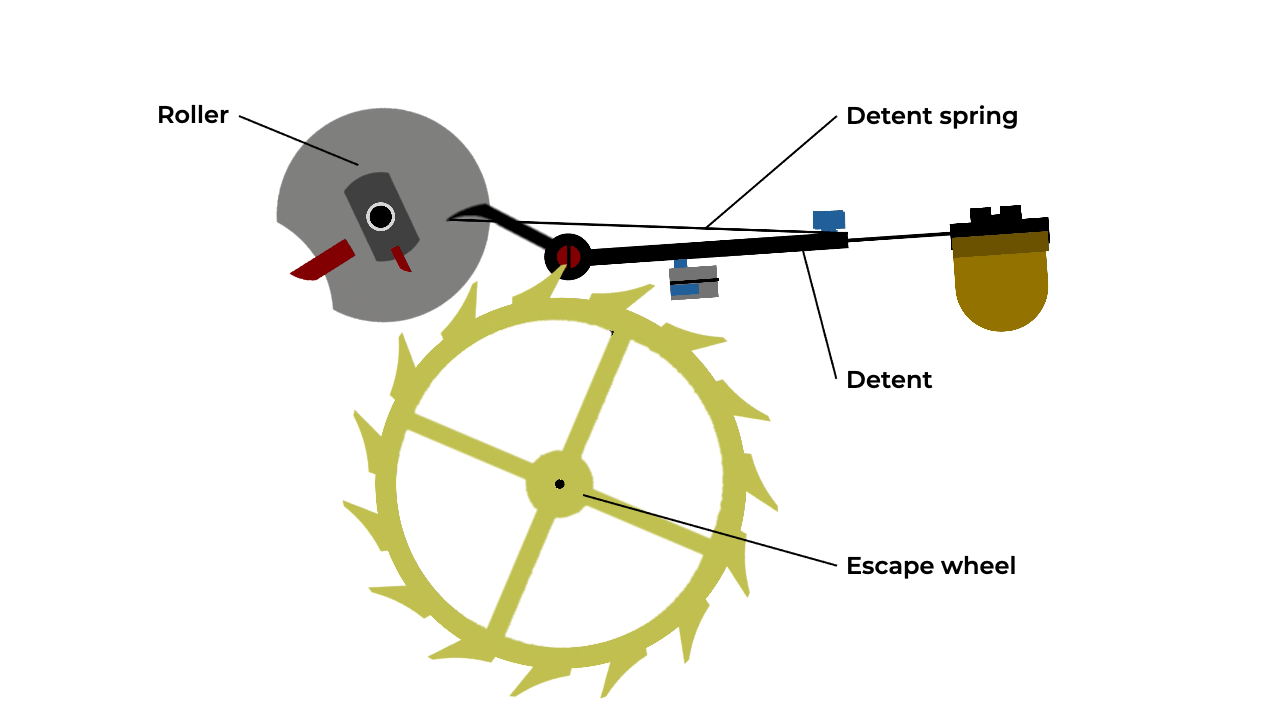DETENT ESCAPEMENT
FABRICATION OF A DETENT ESCAPE WHEEL, THE ARTISANAL METHOD
Your content goes here. Edit or remove this text inline or in the module Content settings. You can also style every aspect of this content in the module Design settings and even apply custom CSS to this text in the module Advanced settings.

The detent escapement is a detached escapement with direct impulse, historically used in marine chronometers. Unlike other escapements, it is characterised by delivering only one impulse per oscillation to the balance, thus referred to as a single-beat escapement.
The invention of the detent escapement is attributed to Pierre Le Roy around 1748. During the 18th century, its development was refined by Thomas Earnshaw and John Arnold. These watchmakers were driven by the pursuit of precision dictated by the demands of maritime navigation, at a time when the accurate determination of longitude was a critical strategic advantage.
The detent escapement quickly became the preferred choice for marine chronometers due to its minimal interference with the balance. Used until the early 20th century, it is now rare in contemporary watchmaking, although some modern artisans still employ it in exceptional timepieces.
Advantages
-
High chronometric precision: The complete absence of friction during the supplementary arc of the balance wheel promotes excellent isochronism.
-
Direct impulse: Energy is transmitted more efficiently than with a Swiss lever escapement.
-
Unhindered balance motion: The balance oscillates freely through most of its cycle, reducing mechanical disturbances.
Disadvantages
-
Extremely shock-sensitive: a fall or jolt may cause the unexpected overbanking or jump of the mechanism, making the escapement unreliable during active wear.
-
Complex to manufacture and regulate: assembly and fine adjustment require rare expertise, limiting its use to very high-end or experimental timepieces.
-
Poor adaptability to wristwatches: due to its sensitivity, it is unsuitable for everyday wristwatches and remains reserved for fixed instruments (such as marine chronometers) or collector’s pieces.
